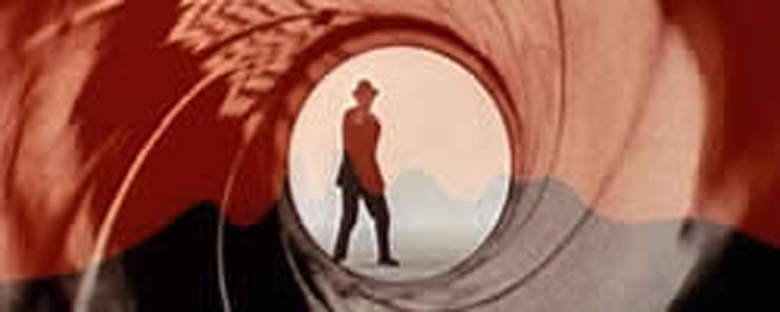Credits
Feature by: Rumsey Taylor
Posted on: 20 March 2005
Related articles:
Features: The Genealogy of James Bond
The character James Bond was introduced in film some forty years ago. He has been portrayed by six men, each of whom has lent some idiosyncrasy or nuance to the role, but the mystique and capability of James Bond has remained virtually unchanged during his entire tenure.
There is some variety in the twenty film franchise, such as the particular make of the gadgeted car Bond drives, or the location in which he seduces women and thwarts villains with consummate poise, but it is a franchise built on durable customs. Bond is a man of remarkable success, sophistication, and wit, equipped with limitless fortune and little fear. He is as durable a masculine fantasy as any in the entire body of film. This is to say, in turn, that this fantasy has not evolved since the character’s filmic inception in 1962.
Nor has Bond suffered the effect of time. Both Sean Connery and Roger Moore inhabited the role in seven films (this includes Connery in the oft-excluded Never Say Never Again). Moore would be the elder by three years, but even in his final outing, A View to a Kill, his character exhibits few, if any of the limitations that one may presume would inhibit a man of 57 years. Each was replaced after about a decade in the role, Bond’s youth replenished while his trials and activity remain persistent. Central to this activity is the plethora of women that inhabit Bond’s universe of riskless promiscuity.
The Bond Girls, notably, bear more of a progressive cultural adaptation than their suitor. They are women of an inclusive variety in their ethnicity or hair color, and some, even, are villains. At the time of this writing, the most recent Bond Girl, Jinx, was introduced in a manner identical to Honey Ryder in Dr. No. This implies a closed circle, of which Bond is the hub connected every spoke; an entire population of women available to, if not experienced by a single man.
The franchise has also borne an adaptation to political and cultural issues. In the mid-80’s, when the threat of HIV first became a paramount social concern, Bond was only explicitly tied to one woman in both The Living Daylights and Licence to Kill. This responsibility was short-lived, however, and a condom has yet to be seen in Bond’s armory of gadgets. The series’ political adaptation has been more implicit. KGB agents are numerous and expendable in a number of the films, relaying Carter and Regean-era Cold War paranoia, for example. This is not to mention the Russian (and, at least, usually foreign) accents that characterize many of Bond’s villains. But what utility the franchise has as political propaganda is not significant, because it is always secondary to the films’ more superficial concerns.
In all, and despite the villains, women, gadgets, and other ephemera that punctuate the films, the traits of the James Bond franchise are no better encapsulated than in the titillating opening credits of most any film in the series. These routinely combine visibly naked silhouettes of anonymous women with a semi-automatic weapon that intends both a literal and metaphoric interpretation.
We don’t do comments anymore, but you may contact us here or find us on Twitter or Facebook.



